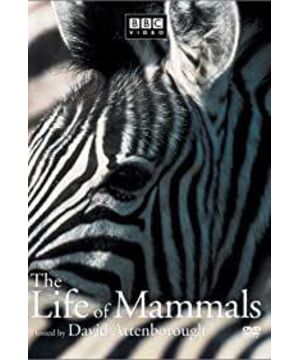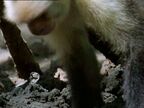1. With the extinction of large reptiles such as dinosaurs, small mammals officially entered the stage. Early mammals also existed when dinosaurs were prosperous. Most of them were nocturnal and small in size, and they were still dominated by dinosaurs during the day. There are still creatures that look like early mammals today. The mouse is generally active at night. Their tiny bodies can generate heat, so they are still active when the night is cool, but these consume a lot of energy, so they almost eat a nonstop.
2. Nurturing young is a must-win talent for mammals. Few reptiles do this. After the extinction of dinosaurs, they did not change much at first, but their body changes were very flexible. One of them has become an aquatic creature with a slight modification. The shadow of early aquatic mammals can be seen from the water-pointed mouse. The water-pointed mouse has oily fur and long whiskers that help find prey in the water. Hairy, feet are like very high performance paddles. Another small mammal lives in the Namib Desert of Africa, the golden mole, which uses its pointed head to swim in the sand and detects the whereabouts of its prey by hearing.
3. Another type of mole, the star-nosed mole, lives in North America. It is good at digging holes with its flipper-like claws and catching prey with its special star-shaped nose. Star-nosed moles live underground, avoiding most predators, while others run on ground trails with less luck than star-nosed moles. In the jungles of East Africa, there lives a mammal called the long-nosed shrew. It likes to make paths on the ground and will keep clearing it to keep it clear, because only in this way, it can effectively escape when it encounters danger.
4. It is time-consuming and energy-consuming to capture insects. It is difficult for creatures that hunt in this way to develop to large size. However, some early insectivores solved this problem by expanding their food range about 40 million years ago. Hedgehogs are descendants of one of them. Hedgehogs are basically nocturnal. Due to their large size, it is not easy to camouflage among the leaves. They are easily attacked by animals such as foxes, so their hair turns into spikes as compensation. Adjacents also grow in size by expanding their food range. The pangolin eats insects very well. The horny scales evolved from the hair are used to resist the attack of prey, and the front claws are large, which are used to dig ant nests, so that they are not used for walking.
5. Sixty million years after the appearance of mammals, social insects emerged, food was abundant, and insect-eating animals gradually became larger in size. In Brazil, there is an animal that eats termites, the giant anteater. It has a keen sense of smell and the lowest body temperature among mammals, which is only 32 degrees, which indicates that its brain is not flexible and its response is not quick. Long mucus tongue. Fossil evidence shows that the body structure of pangolins and giant anteaters has not changed much for tens of millions of years, which is because the food they eat has not changed.
6. Bats are mammals that can fly, and their faces are very similar to those of pointed rats. Scientists speculate that the ancestors of pointed rats jumped up and down trees to catch prey, and the skin between their fingers became larger and larger, and eventually flew to the sky. Long-eared bats do not hunt by sonar, but use their large ears to listen to their prey. Natana's bat can see the tiny webs at a glance, and can catch spiders from the web with precision, and it even flies backwards to avoid getting caught in the web. The number and density of Mexican pine-tailed bats is the highest among mammals in the world. Pocket brown bats can survive the winter without food, known as hibernation. Bats were among the first mammals to enter New Zealand, an isolated land in the South Pacific, where bats love to eat earthworms.
View more about The Life of Mammals reviews








